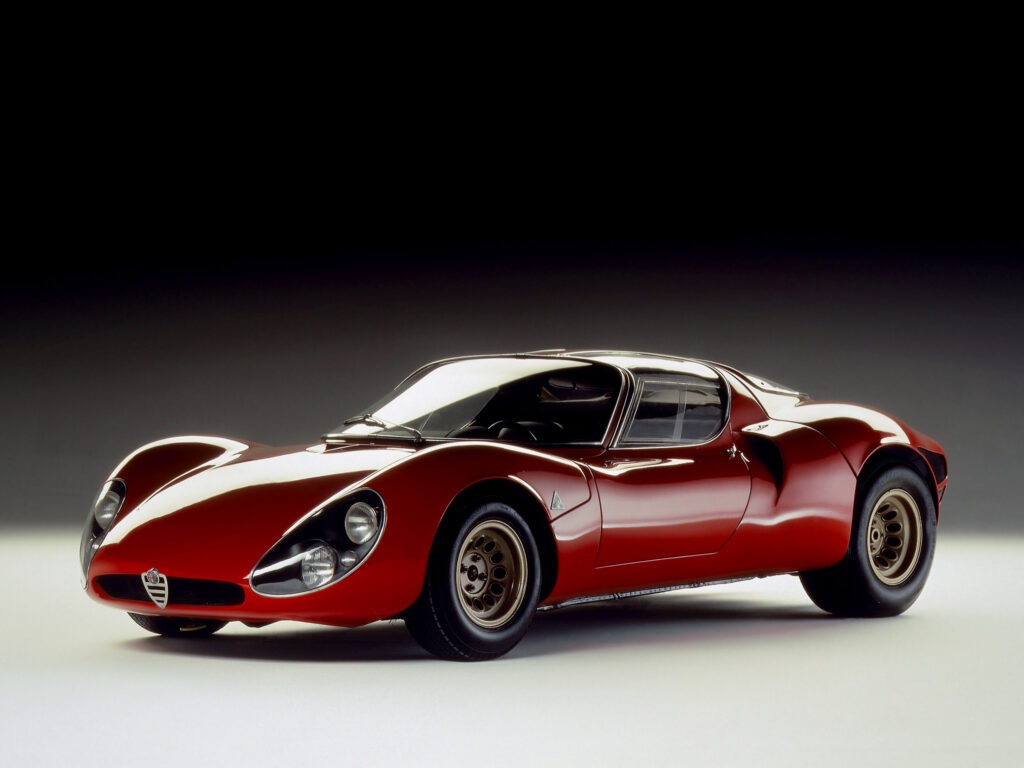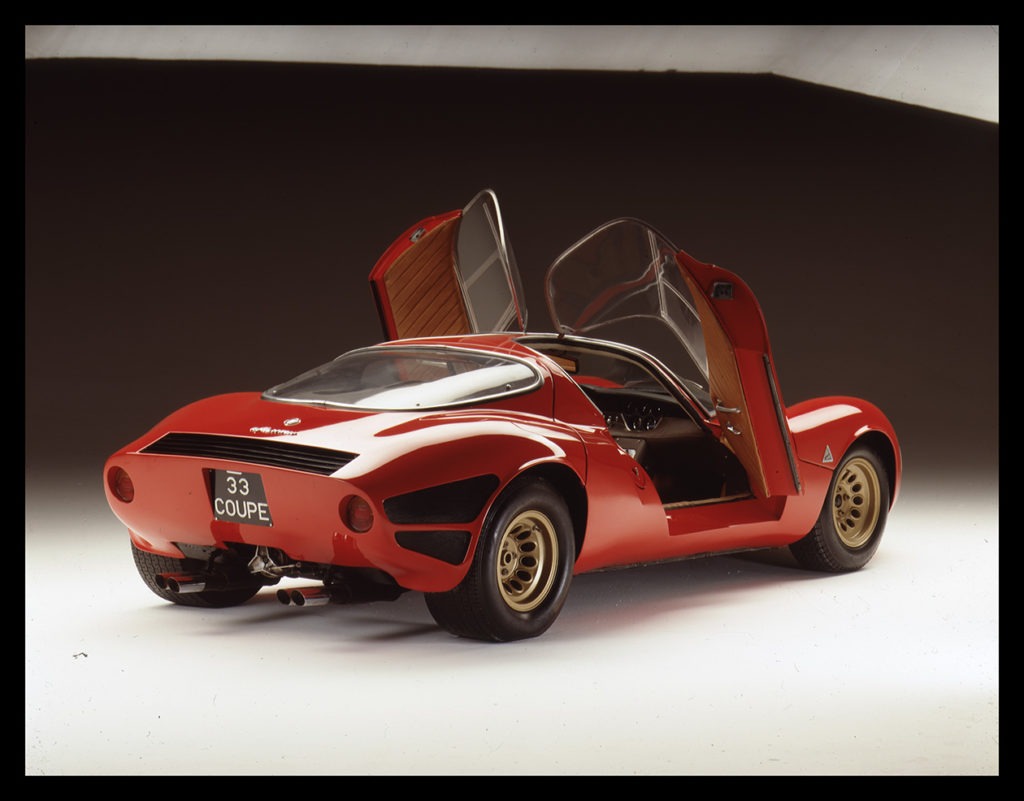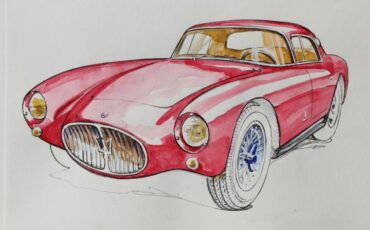
The origin of the Alfa Romeo 33 Stradale
In 1967 Autodelta decided to take part at the 2.0L division of the World Sportscar Championship with a new prototype to replace the Tubolare Zagato (Giulia TZ). Carlo Chiti started the Project called P-33. While Autodelta was working on one of the prototypes, the “Periscopio”, for Sebring, Franco Scaglione was assigned to design a road version of P-33, although there was no necessity of producing this Alfa Romeo 33 Stradale version due to Homologation.
Built by the newly formed Carrozzeria Marazzi, the new-born P-33 Stradale was unveiled at Paris Salon de L’Auto in October 1967 with an Aluminium body on a tubular Aluminium chassis. The first 2 Alfa Romeo 33 Stradale prototypes had double headlights but changed in later models to single ones and raised by the altitude due to the regulations indicating the minimum distance of the headlights from the ground.

The 2nd prototype, kept at the Museo Storico Alfa Romeo in Milan, used a magnesium body though. The late models had also some different vents on the tail and both front and rear sides. Some other differences between the examples, at least in minor details, can also be detected why the cars are hand built.
Marazzi claims that totally 18 chassis were made, 8 bodied by them with the original Alfa Romeo 33 Stradale Scaglione design and 5 sent to Bertone, Pininfarina and Italdesign to have concept cars built on that led to the birth of 6 outstanding concepts (Pininfarina made 2 on 1 of the chassis) including Carabo by great Marcello Gandini at Bertone. All these cars are also at Alfa Museum.
Tecnical specifications
The Alfa Romeo 33 Stradale was powered by a 33 race cars derivative engine but with differences. The engine was an all aluminium 1996cc, dry sump V8, 2valves/cyl DOHC with flat-plane crankshaft, designed with an oversquare bore/stroke ratio, using 2 spark plugs/cyl and SPICA fuel injection which could rev up to 10,000 rpm producing around 230 hp @ 8800 rpm & 206 Nm @ 7000 rpm which was delivered through a 6 speed manual transmission that allowed the car get from 0 to 100km/h in less than 6s and achieve a top speed of 260 km/h. It also used upper-lower control arms in front & trailing arms in rear suspension, with Girling disk brakes, in-board in the rear.
Photos:
Alfa Romeo Automobilismo Storico,
Centro Documentazione (Arese, Milano)
Follow: Encycaropedia












